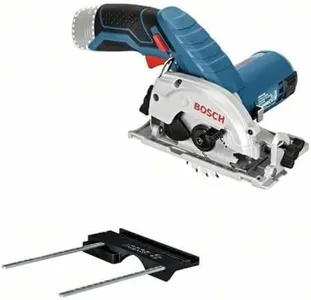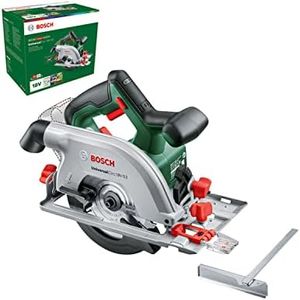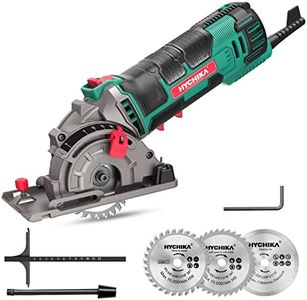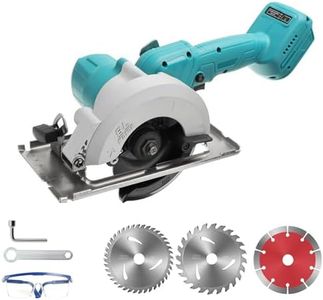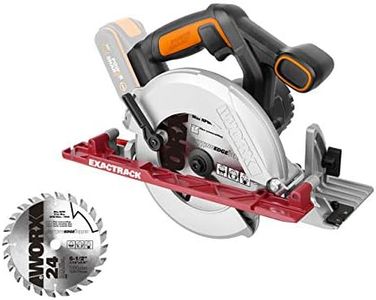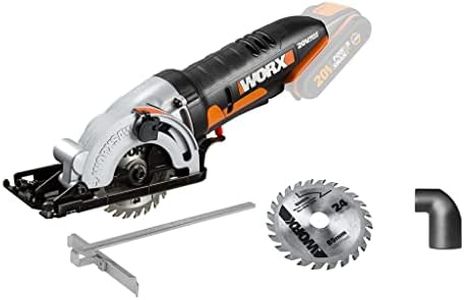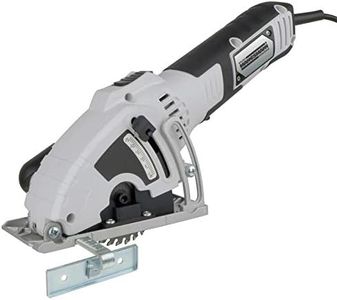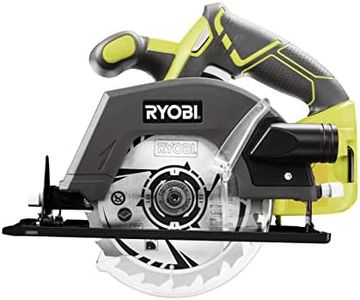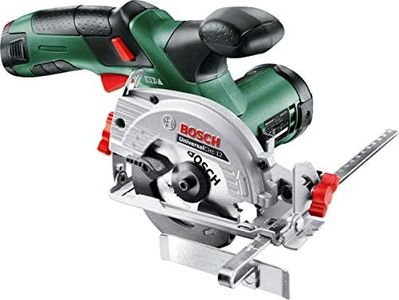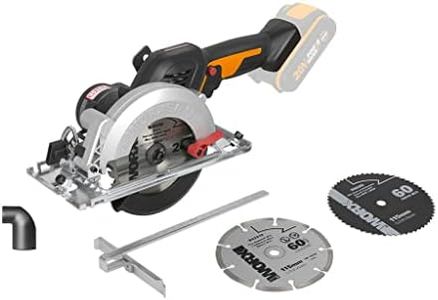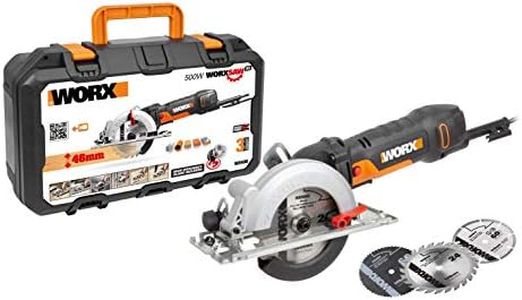We Use CookiesWe use cookies to enhance the security, performance,
functionality and for analytical and promotional activities. By continuing to browse this site you
are agreeing to our privacy policy
10 Best Mini Circular Saws
From leading brands and best sellers available on the web.Buying Guide for the Best Mini Circular Saws
Mini-circular saws are versatile cutting tools that are great for DIY projects, home renovations, and light professional work. When shopping for a mini-circular saw, it's important to consider what types of materials you plan to cut and how often you will use the tool. You should focus on finding a balance between power, safety, weight, and ease of use to ensure you pick a saw that matches your needs and skill level. Take your time to understand the core features of mini-circular saws so you can choose the one that feels right in your hand and delivers reliable performance.Blade SizeBlade size refers to the diameter of the saw blade, usually measured in inches or millimeters. This is important because it determines how deep the saw can cut in a single pass. Smaller blades (around 3-4 inches) are great for precision and handling thinner materials, while larger blades (up to 6 inches) allow for deeper cuts and more versatility. If you mostly work on small, detailed projects or delicate materials, a smaller blade will offer more control. For jobs that involve thicker wood or require deeper cuts, opt for a larger blade size to ensure you won't need multiple passes.
Motor PowerMotor power in mini-circular saws is usually measured in amperage (amps) or wattage (watts), and it determines how easily the saw can cut through different materials. Lower-powered motors (under 4 amps) are ideal for light-duty tasks like cutting thin plywood or laminate. Mid-range motors (4-6 amps) can handle most common household jobs, including cutting softwoods and plastics. Higher-powered saws (above 6 amps) are suited for tougher materials like hardwood or metal. Choose the motor power based on the materials you plan to cut most often: don’t go for more power than you need, but make sure you have enough to avoid getting stuck mid-cut.
Cutting DepthCutting depth tells you how deep the blade can cut in one pass. This matters because it affects what thickness of material you can work with. Entry-level mini-circular saws often offer cutting depths of 1 inch or less, which is fine for thin boards and paneling. Medium-depth models (1-1.5 inches) provide flexibility for a wider range of home projects. If you expect to work on projects involving thicker slabs or multiple layers, a cutting depth above 1.5 inches is recommended. Pick a saw with a cutting depth that matches the thickness of the materials you’ll use most often, so you can work efficiently without switching tools.
Weight and ErgonomicsThe weight and ergonomics of a mini-circular saw determine how comfortable and easy it is to use, especially during longer projects. Lightweight saws (under 4 lbs) are easier to maneuver and cause less fatigue, making them ideal for small tasks or users with less hand strength. Heavier saws can feel more stable but may be harder to control for precise cuts. Good ergonomics—like a comfortable grip and well-placed controls—are equally important for safety and comfort. Choose a saw that feels balanced and easy to hold, as this will help you work more accurately and safely.
Bevel CapacityBevel capacity tells you whether the saw blade can tilt to make angled cuts. Some mini-circular saws offer a fixed 90-degree cut only, while others allow for bevel cuts, typically up to 45 degrees. If you plan on making joints, frames, or decorative angled cuts, a saw with adjustable bevel capacity is essential. For straightforward, straight-line cutting, bevel adjustments are less necessary. Base your decision on the types of cuts you expect to make most—if you anticipate complex or angled projects, look for flexible bevel options.
Safety FeaturesSafety features are crucial because they help prevent accidents. Common safety features in mini-circular saws include blade guards, lock-off switches, and non-slip handles. Some may also have electric brakes that stop the blade quickly after use. Beginners or those working in less controlled environments should prioritize easily accessible safety controls. Make sure the saw you choose feels safe and manageable; features that let you stop the blade quickly or securely grip the tool can make a big difference.

